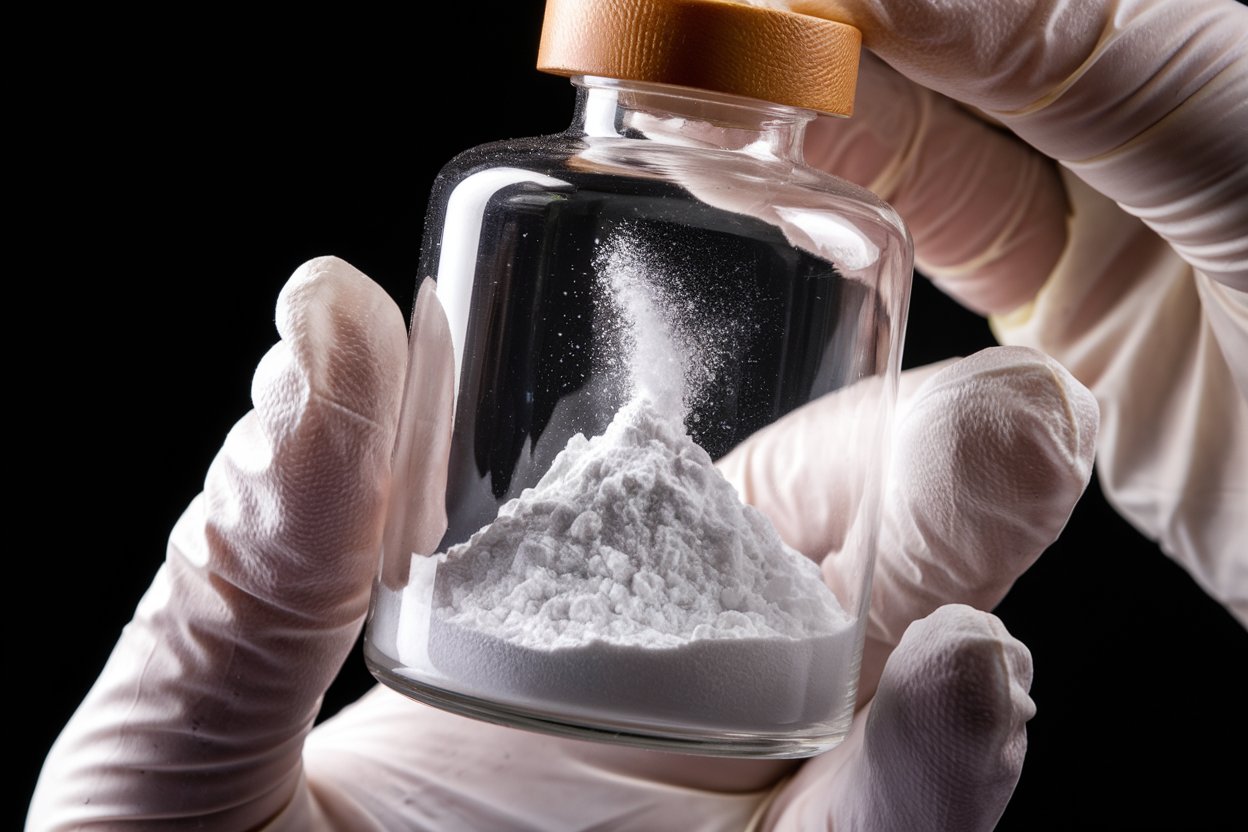
Curium(III) chloride, a compound with the formula CmCl3, is a fascinating substance with unique properties. Curium itself is a rare, radioactive element named after Marie and Pierre Curie. This compound is primarily used in scientific research due to its intense radioactivity. Curium(III) chloride is typically produced in small quantities, making it quite valuable. It has a crystalline structure and is often used to study the behavior of actinides. Handling this compound requires extreme caution because of its high radioactivity. Curium(III) chloride plays a crucial role in understanding nuclear reactions and the properties of heavy elements. Let's dive into 30 intriguing facts about this remarkable compound.
Key Takeaways:
- Curium(III) chloride is a highly radioactive compound used in nuclear science. It has unique physical and chemical properties, making it valuable for applications like cancer treatment and scientific research.
- Safety and environmental concerns surround curium(III) chloride due to its radioactive nature. Proper handling, storage, and disposal are crucial to prevent health risks and environmental contamination.
What is Curium(III) Chloride?
Curium(III) chloride is a chemical compound with the formula CmCl3. It consists of curium and chlorine atoms. This compound is significant in nuclear science and has some unique properties.
- Curium(III) chloride is a radioactive compound.
- It is composed of curium, a synthetic element, and chlorine.
- The chemical formula for curium(III) chloride is CmCl3.
- Curium was discovered in 1944 by scientists Albert Ghiorso, Glenn T. Seaborg, and James**.**
- Curium is named after Marie and Pierre Curie, pioneers in radioactivity research.
Physical Properties of Curium(III) Chloride
Understanding the physical properties of curium(III) chloride helps in its handling and application. Here are some key aspects:
- Curium(III) chloride appears as a white crystalline solid.
- It has a melting point of approximately 850°C.
- The compound is soluble in water, forming a clear solution.
- It has a high density due to the presence of curium.
- Curium(III) chloride exhibits fluorescence under UV light.
Chemical Properties of Curium(III) Chloride
The chemical behavior of curium(III) chloride is crucial for its use in various applications. Let's explore some of its chemical properties:
- Curium(III) chloride is highly reactive with water.
- It forms curium hydroxide when it reacts with water.
- The compound can be oxidized to higher oxidation states.
- It reacts with hydrochloric acid to form curium(III) chloride.
- Curium(III) chloride can form complexes with other ligands.
Applications of Curium(III) Chloride
Curium(III) chloride has several applications, especially in the field of nuclear science. Here are some notable uses:
- It is used in nuclear reactors as a fuel.
- The compound is employed in alpha-particle spectroscopy.
- Curium(III) chloride is used in radiation therapy for cancer treatment.
- It serves as a source of alpha particles in scientific research.
- The compound is used in neutron activation analysis.
Safety and Handling of Curium(III) Chloride
Due to its radioactive nature, curium(III) chloride requires careful handling. Here are some safety considerations:
- Curium(III) chloride is highly radioactive and must be handled with care.
- It should be stored in shielded containers to prevent radiation exposure.
- Proper protective equipment is necessary when handling the compound.
- It can cause radiation burns if it comes into contact with skin.
- Inhalation or ingestion of curium(III) chloride can lead to serious health issues.
Environmental Impact of Curium(III) Chloride
The environmental impact of curium(III) chloride is a concern due to its radioactivity. Here are some points to consider:
- Curium(III) chloride can contaminate soil and water if not properly contained.
- It has a long half-life, making it persist in the environment.
- The compound can bioaccumulate in living organisms.
- Proper disposal methods are essential to prevent environmental contamination.
- Research is ongoing to find ways to mitigate its environmental impact.
The Final Word on Curium(III) Chloride
Curium(III) chloride, a fascinating compound, holds significant importance in scientific research. This radioactive material, primarily used in nuclear reactors and space missions, showcases the incredible advancements in chemistry and physics. Its unique properties, such as high radioactivity and ability to generate heat, make it invaluable for various applications.
Understanding curium(III) chloride's role in the periodic table and its practical uses helps us appreciate the complexity of modern science. From powering space probes to aiding in cancer treatment research, this compound's contributions are undeniable. While handling it requires extreme caution due to its radioactivity, the benefits it offers to humanity are immense.
Curium(III) chloride stands as a testament to human ingenuity and the relentless pursuit of knowledge. As we continue to explore its potential, who knows what other groundbreaking discoveries await?
Frequently Asked Questions
Was this page helpful?
Our commitment to delivering trustworthy and engaging content is at the heart of what we do. Each fact on our site is contributed by real users like you, bringing a wealth of diverse insights and information. To ensure the highest standards of accuracy and reliability, our dedicated editors meticulously review each submission. This process guarantees that the facts we share are not only fascinating but also credible. Trust in our commitment to quality and authenticity as you explore and learn with us.
